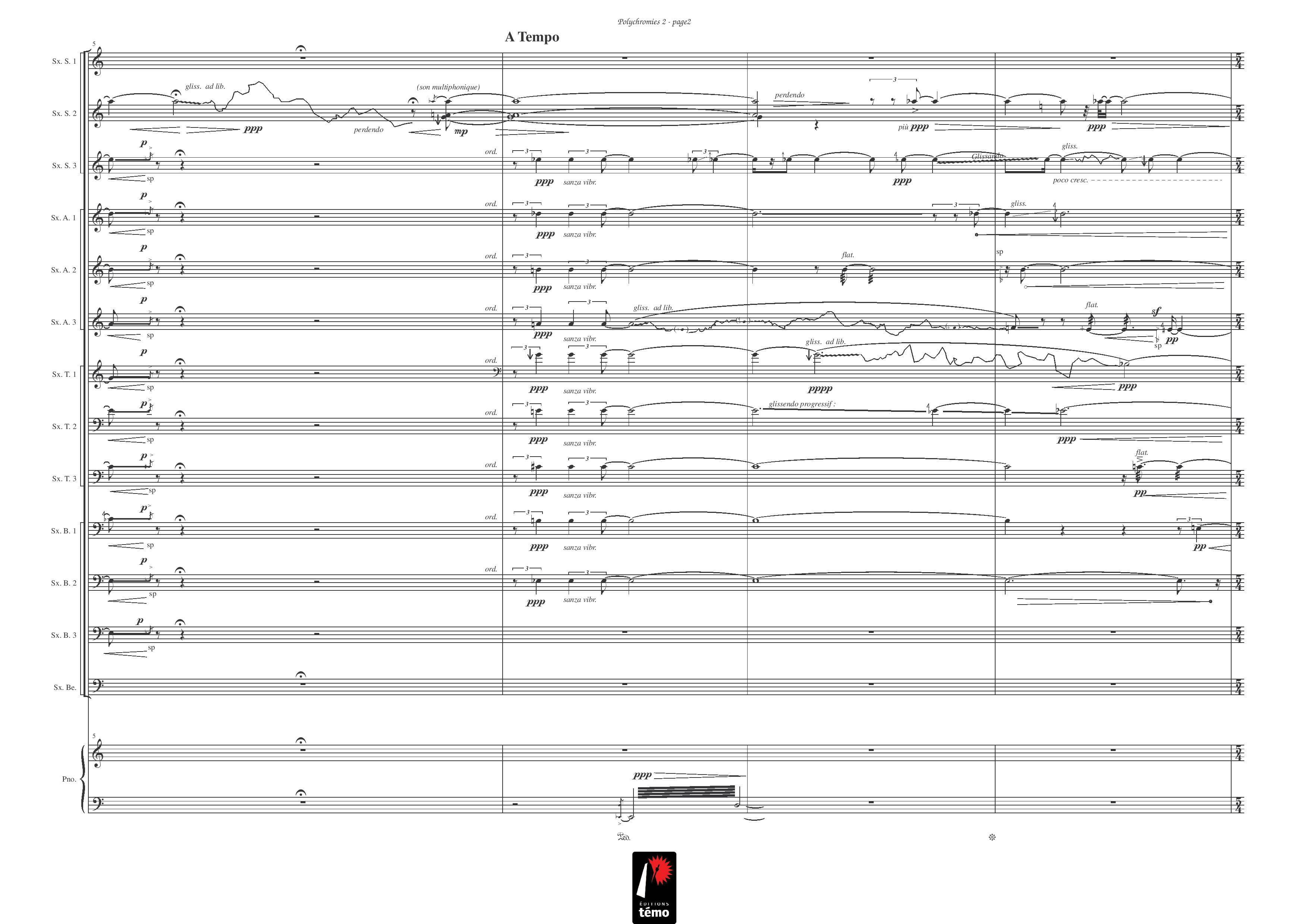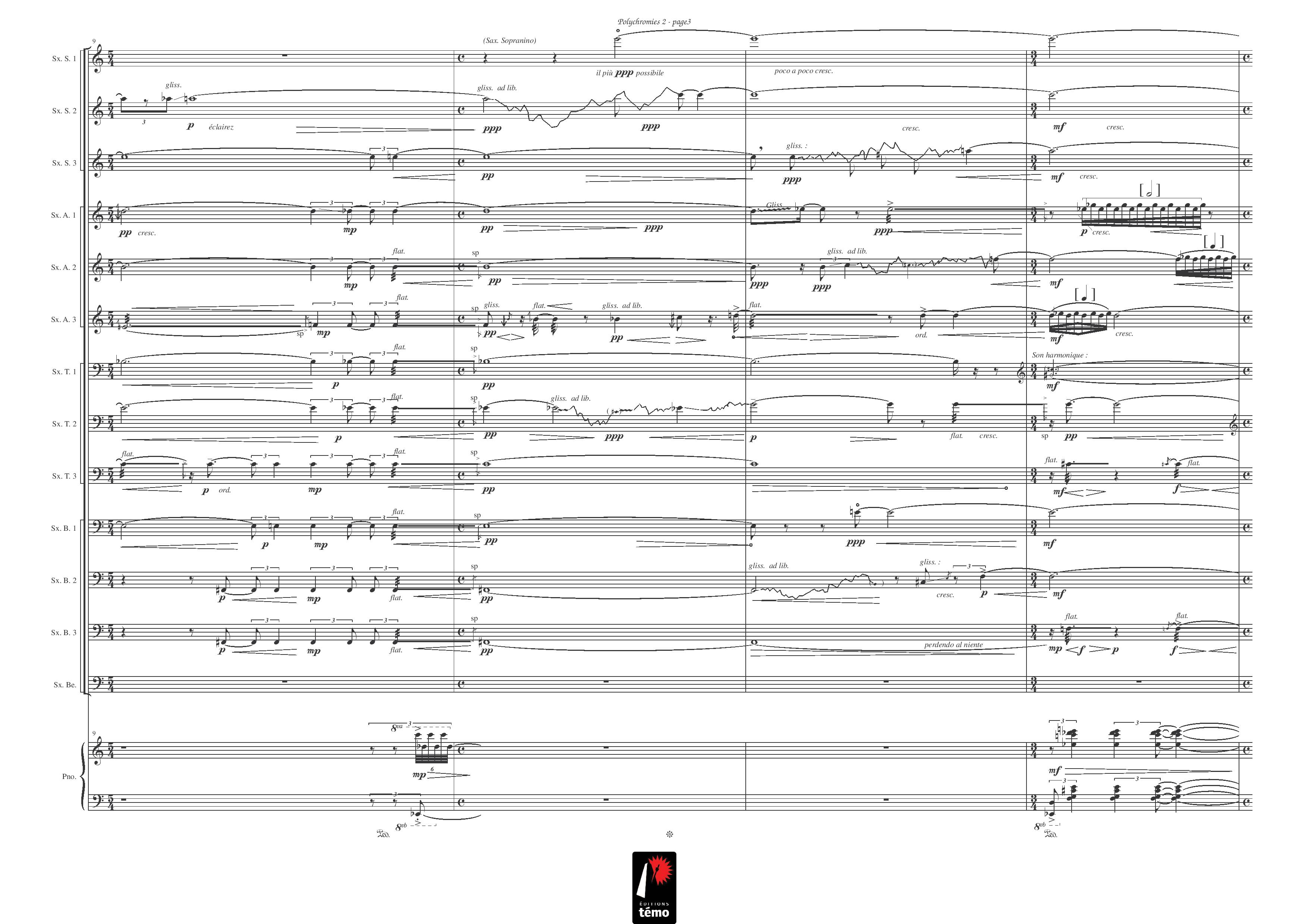Symphonic music & big ensembles
Polychromies 2 (2008) "Moving color"
for ensemble of 13 saxophones and piano
Creation on March 15, 2009 at the Auditorium Saint-Germain (Paris)
by the Saxetera ensemble,
direction: Jean-Pierre Ballon
Duration: 12 minutes
Presentation :
To what extent does the work of the sound material as such determine the other musical parameters that are durations, harmony, instrumentation and even the whole form? This question has haunted my research for some time now, and finds its paroxysm in the triptych of "Polychromies", pieces of different dimensions ranging from the formation of "chamber music" to the large orchestra including all the saxophones and piano what is the second.
The initial principle is therefore simple: the concept of "color" remains the main actor of these three works, it is nevertheless understood very differently each time. Thus, if the idea of Polychromies 1 (subtitled "time-color") was based on the notion of "color structures" and density contrasts according to the analysis of light spectra, Polychromies 2, on the other hand, suggests by its title "color in movement" a moving aspect, in constant evolution, of a (small) number of "primary" colors gradually degrading into more subtle shades.
These initial colors are here harmonic complexes resulting from the natural resonances of the saxophone, from where the use of a musical orthography which integrates the micro-intervals, not in the continuity of the researches of the “spectral” music or in any scale modal, but quite simply to prolong or anticipate certain specific wires of the saxophone (such as the multiphonics) which generate colors different from those of the piano with these are either in conflict or in osmosis.
By this process, the entire piece slides from one atmosphere to another: the four primary colors quickly generate four secondary colors and as many "tertiary" colors: the total of twelve is reached at both levels of the work - culminating point - and gives the key to the listener: what follows is only a summary summary of these adventures, the conduct of which is entrusted mainly to the piano which finally takes off, as released. Finally, a vast coda breaks the systematic logic of the play to find the nocturnal and mysterious spirit that introduced the Polychromies 1.





